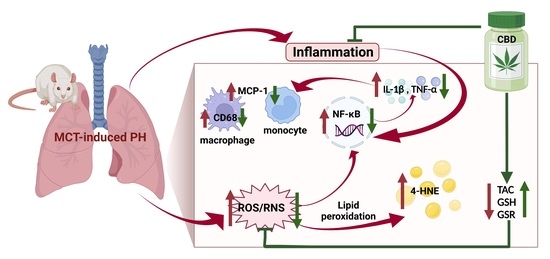
“HYPER-H21-4 was a randomized crossover trial that aimed to determine if cannabidiol (CBD), a non-intoxicating constituent of cannabis, has relevant effects on blood pressure and vascular health in patients with essential hypertension. In the present sub-analysis, we aimed to elucidate whether serum urotensin-II concentrations may reflect hemodynamic changes caused by oral supplementation with CBD. The sub-analysis of this randomized crossover study included 51 patients with mild to moderate hypertension that received CBD for five weeks, and placebo for five weeks. After five weeks of oral CBD supplementation, but not placebo, serum urotensin concentrations reduced significantly in comparison to baseline (3.31 ± 1.46 ng/mL vs. 2.08 ± 0.91 ng/mL, P < 0.001). Following the five weeks of CBD supplementation, the magnitude of reduction in 24 h mean arterial pressure (MAP) positively correlated with the extent of change in serum urotensin levels (r = 0.412, P = 0.003); this association was independent of age, sex, BMI and previous antihypertensive treatment (β ± standard error, 0.023 ± 0.009, P = 0.009). No correlation was present in the placebo condition (r = -0.132, P = 0.357). In summary, potent vasoconstrictor urotensin seems to be implicated in CBD-mediated reduction in blood pressure, although further research is needed to confirm these notions.”
https://pubmed.ncbi.nlm.nih.gov/37321059/
https://www.sciencedirect.com/science/article/pii/S0753332223008065?via%3Dihub










